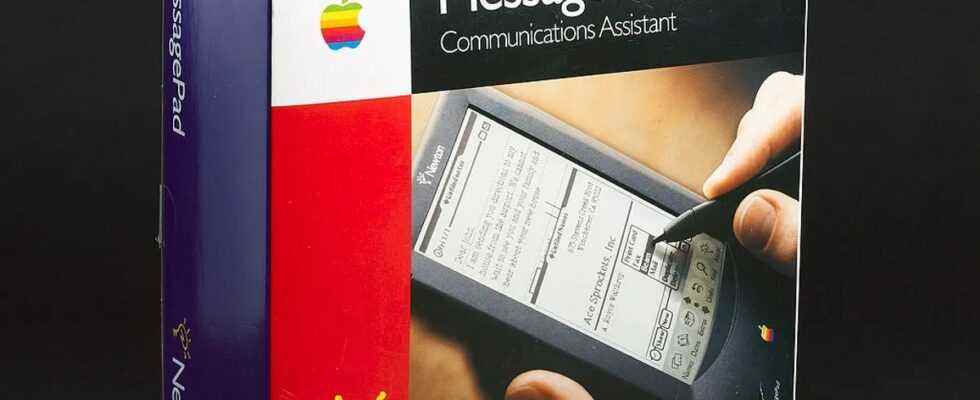One of my earliest memories is of the first moon landing, so it’s no surprise I was hooked on the show. For All Mankind on Apple TV, with its alternate history of a space race that didn’t end with Apollo 17.
It’s a riveting drama, tracing the development of moon bases, space stations, nuclear spacecraft, and now, in season three, competing missions to Mars, as commercial space travel adds to the rivalry. between the United States and Russia.
It’s an interesting premise, looking at a story where the space race allowed the Cold War to continue well into the 90s, and where cheap energy from the moon restructured the Mondial economy.
Thirty years of space-related technological changes have made the world of For All Mankind in season 3 is very different from ours, while still being recognizable. Many of these changes seem minor, but they show that there have been fundamental developments in computing and networking that put the show’s computing infrastructure at least a decade ahead of where we were in the 90s. , hidden under an unchanged aesthetic.
Some of these changes are reminiscent of paths nearly taken, where a change in investment or standards could have moved technology in new directions. It is a narrative approach reminiscent of Kubrick’s film 2001: A Space Odysseyin which space shuttles took people to space stations and beyond, but were piloted by the now-defunct PanAm, and videophones were run by the first iteration of AT&T.
Back to grace
The other week I sat down to catch up on episodes and spotted an interesting piece of this technology: Apple’s Newton-based videophones that are clearly nothing new to the characters on the show. What surprised me the most was the reminder of a long-forgotten project I was involved in in the early 1990s.
At the time, the Newton was state-of-the-art, based on an early version of ARM’s RISC processor, with its own NewtonScript programming environment and an object-based file system. Yes, it had handwriting recognition, but that’s not what made it interesting to anyone working in pervasive computing at the time. What was most interesting was that it managed to pack low power consumption (for its time) into a small form factor device, all on a platform that was clearly designed to be network-ready. high-speed wireless.
The devices that the production team of For All Mankind built for the show (which were 3D-printed cases encasing iPhones) are ’90s NewtonPhones, with the addition of cameras and high-speed networking.
And that’s where I kind of come into the story. The European Union has a research grants program to encourage European technology industry. I had just completed a project to determine if the first digital cordless phone technology, CT2, could be used to provide wireless networking in offices, and the leader of our group asked me to see how we could work with a consortium of other companies to obtain a grant.
Pivotal period
The early 1990s was a boom time for the telecommunications industry. We could see how digital technologies were going to change the way we worked, with a shift from wired to wireless to the core connected world we were building. Every week, I sat in the lab library reading new articles describing technologies and protocols in the IEEE journals, as the standards that form the foundation of today’s global network were being developed. be defined.
One such technology was HiperLAN. Conceived at the same time as the first IEEE 802.11 wireless standard, it combined a small-cell networking approach with higher data rates than early 802.11 systems, aiming for over 5 Mbps. It may seem slow by today’s standards, but that was back in 1994. I spent some time working out how we could use the Asynchronous Transfer Mode protocol to provide connectivity to wireless devices , using a modification of the KA9Q amateur radio IP network protocols as they provided a way to handle connections on the same frequency when there is no line of sight between multiple transmitters and receivers.
We worked on a “portable media device”, which would use HiperLAN to stream manuals and other materials, using the Newton as the basis of our team’s device.
Towards the end of the first phase of the project, I came across Cornell University’s CU-SeeMe project, the first simple video conferencing application. It used inexpensive video cameras from Connectix to add video chat to Macintosh computers, and could work on low-bandwidth networks. So we incorporated it into the project, suggesting that our Newton-based device could be equipped with a camera to allow engineers to show each other their problems and share their solutions. I remember thinking at the time that it was a brilliant idea.
Then I was offered a good job somewhere else, gave my notice, and left to build some of the consumer internet. I’m not sure what happened after I left; I suspect the project was never funded and got lost in the files.
The Newton was canceled – too big, too heavy and too expensive – and therefore went no further, although Qualcomm at one point tried to persuade Apple to fit a Qualcomm radio into it to create an early competitor for smartphones.
Over the years I forgot about this project, until I turned on Apple TV and saw it, an alternate version of a device I had come up with so many years ago, used for make a video call to a spaceship.
And now I know what I would have done in that alternate universe.
Source: “ZDNet.com”
